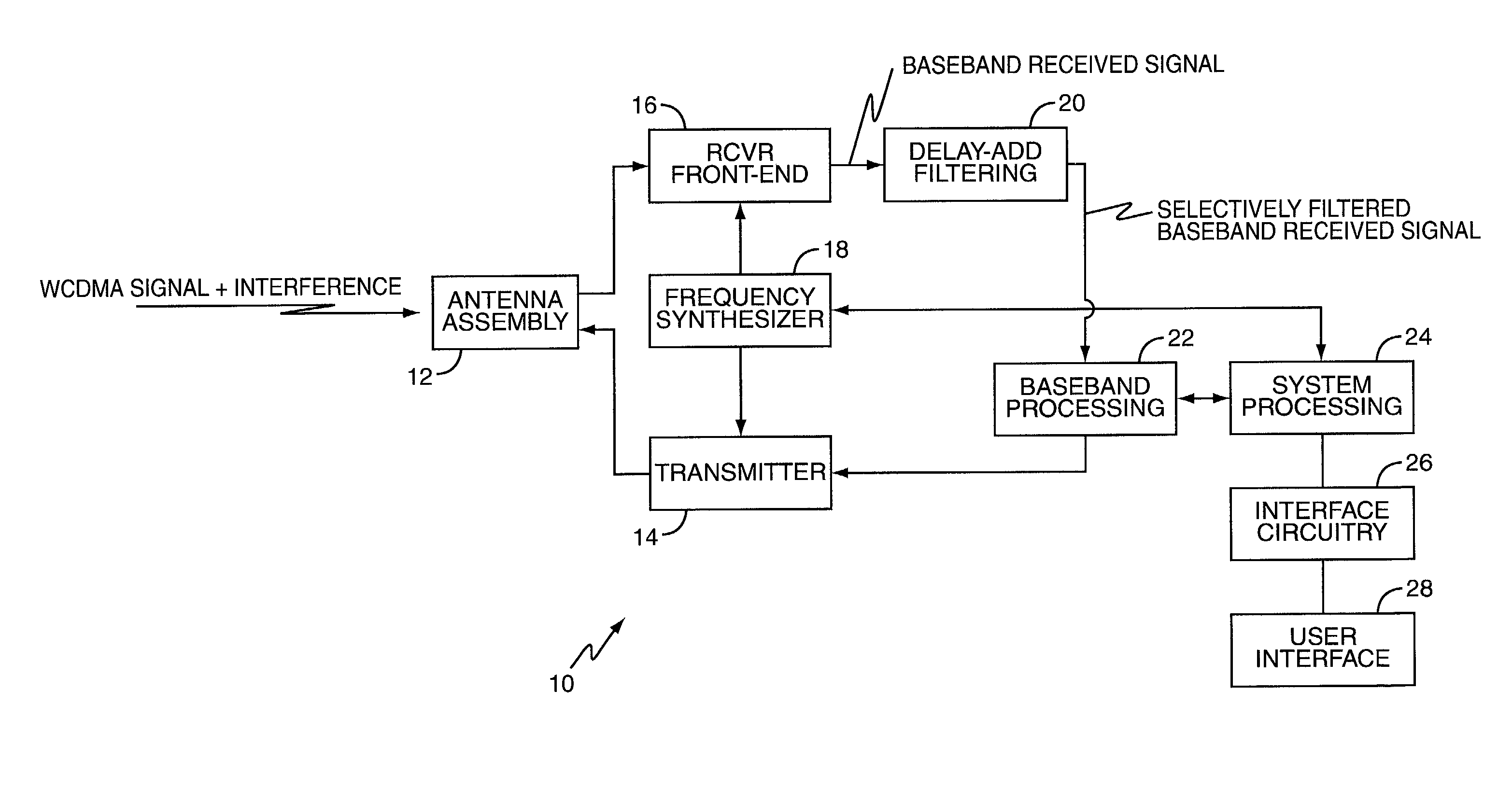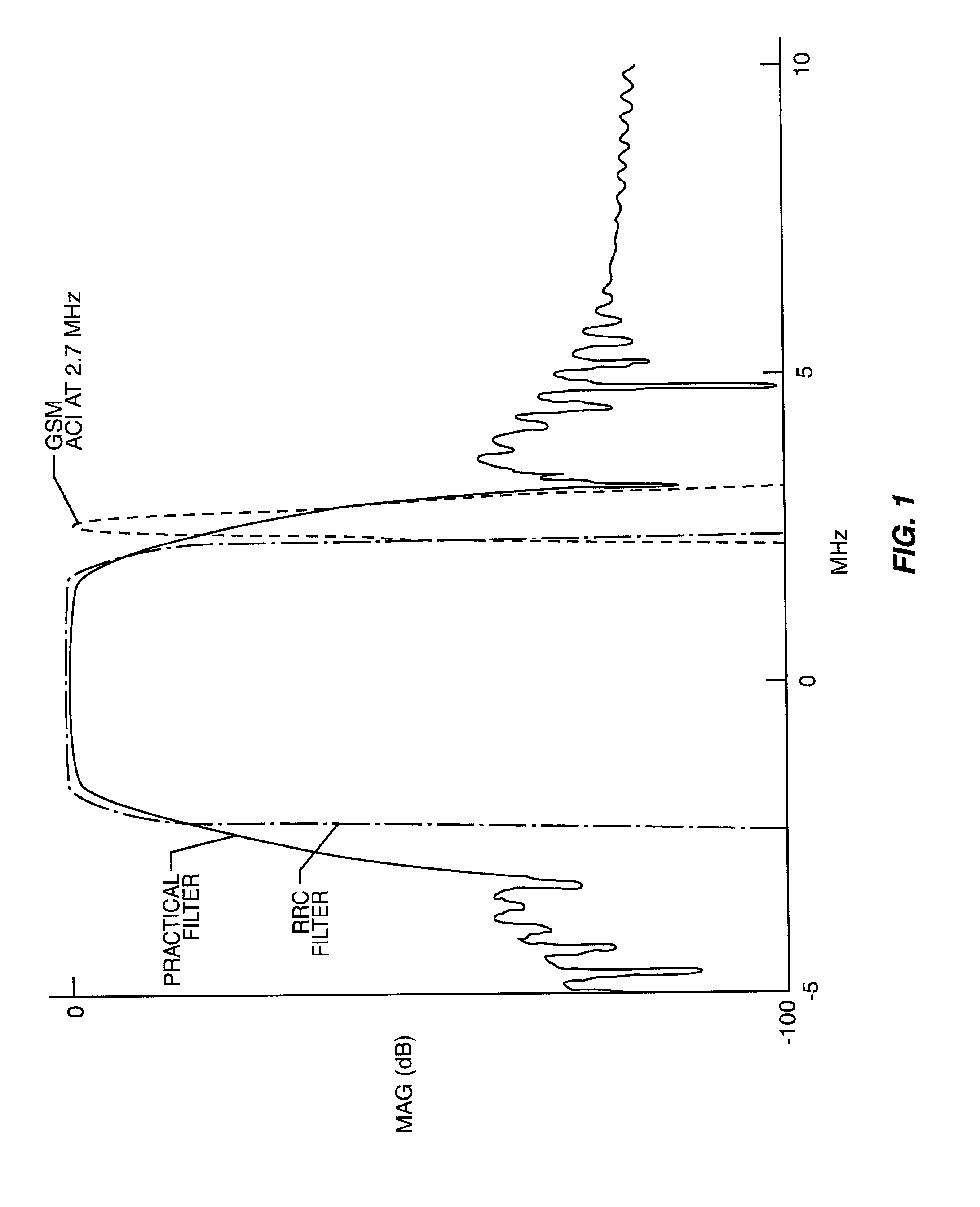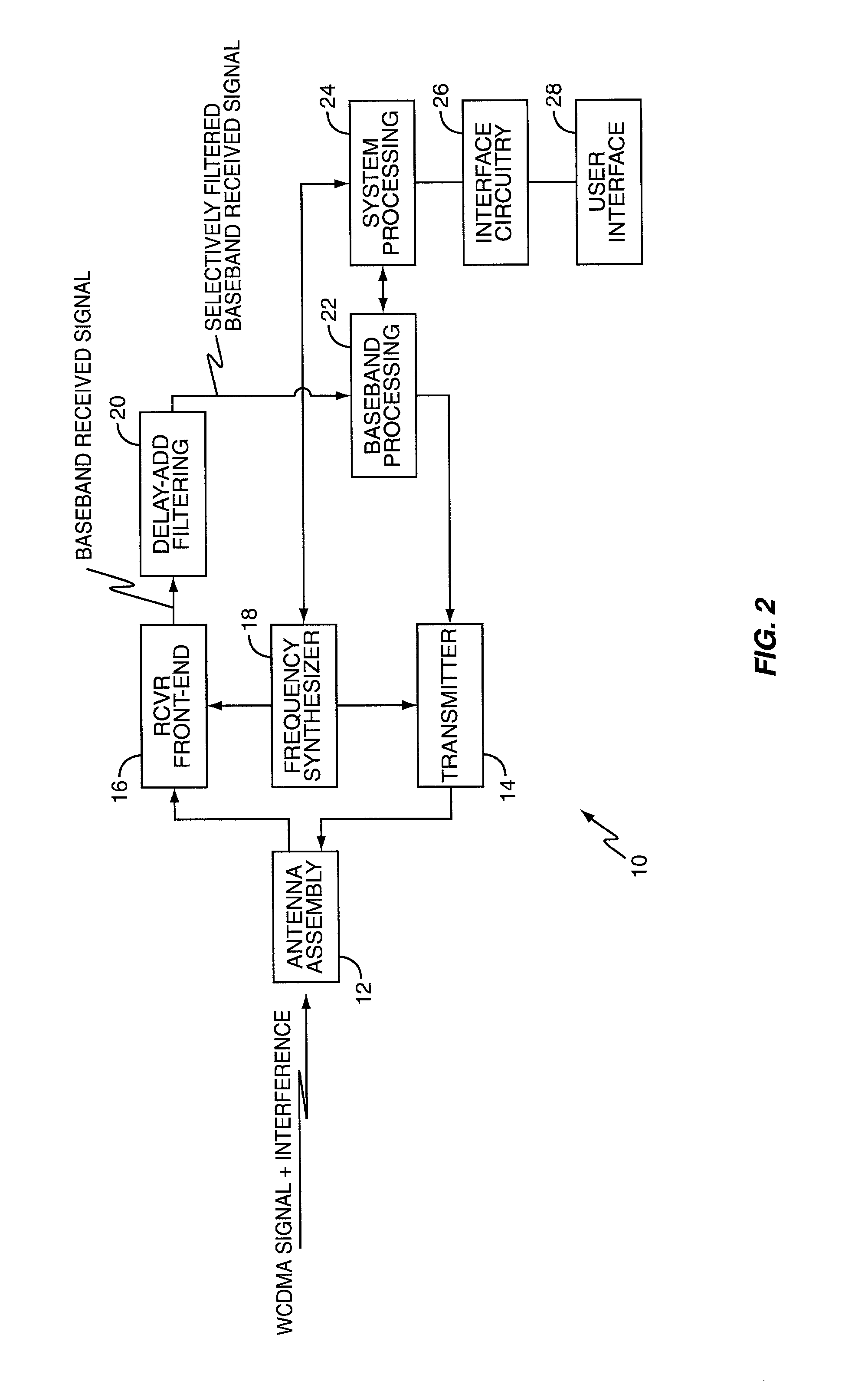Received signal filtering for enhanced selectivity
- Summary
- Abstract
- Description
- Claims
- Application Information
AI Technical Summary
Benefits of technology
Problems solved by technology
Method used
Image
Examples
Embodiment Construction
[0015]W-CDMA systems provide an exemplary framework for discussing at least some embodiments of the present invention, but it should be understood that the present invention has applicability beyond its use in W-CDMA systems. In general, the present invention provides an approach to removing narrowband interference from a wideband signal that is computationally efficient and economical to implement.
[0016]As an example of where narrowband interference might be problematic, consider that wireless communication systems based on W-CDMA standards may use RF spectrum at or close to the 1900 MHz PCS bands. Other wireless communication systems (e.g., GSM-based systems) may occupy essentially the same spectrum, thus raising the possibility that the much wider bandwidth W-CDMA signals will be jammed by one or more narrowband signals.
[0017]FIG. 1 plots normal analog filter responses for ideal and practical filters as might be used in filtering baseband W-CDMA signals, and additionally plots th...
PUM
 Login to View More
Login to View More Abstract
Description
Claims
Application Information
 Login to View More
Login to View More - R&D
- Intellectual Property
- Life Sciences
- Materials
- Tech Scout
- Unparalleled Data Quality
- Higher Quality Content
- 60% Fewer Hallucinations
Browse by: Latest US Patents, China's latest patents, Technical Efficacy Thesaurus, Application Domain, Technology Topic, Popular Technical Reports.
© 2025 PatSnap. All rights reserved.Legal|Privacy policy|Modern Slavery Act Transparency Statement|Sitemap|About US| Contact US: help@patsnap.com



